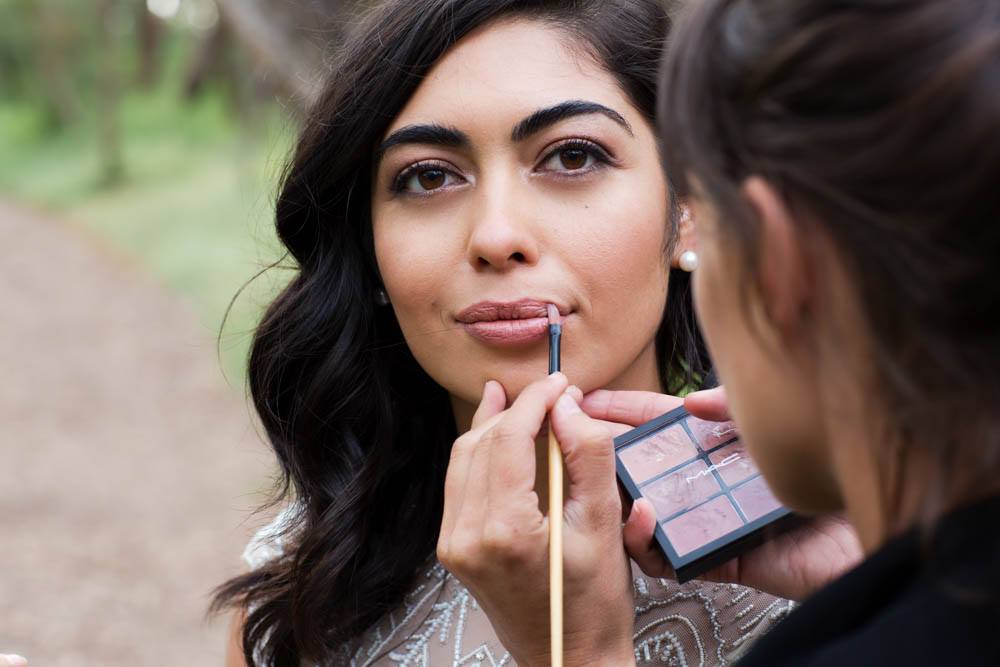Its often said that a makeup artist’s portfolio is their resume or calling card. In my 16 year career, the only time I have really been asked for a resume or CV as such, is when I applied for a teaching job, and a couple of times for film/video work. For the most part, working as an artist in photographic makeup (advertising, editorial, bridal and special occasion), my portfolio has been more important.
Only a short while ago (10-15 years – before the advent of social media) Makeup Artists would display their best work in a physical portfolio, usually a beautiful leather bound book and photos printed out to 11 x 15 inches. (In fact, such portfolios were usually referred to as a “book”) As you can imagine, this got pretty expensive, my book alone cost over $500 even without printing out any images to go in it. Artists would make appointments with photographers, designers, agents and other industry professionals, and “go-see” them and show their book, in hopes that they would book work. Agency represented artists often had several copies of their book which their agent could send out to prospective clients too.
In this digital age, everything needs to happen a lot faster. Nowadays if someone asks to see my portfolio, I simply send them a link to my website (or Instagram or Facebook if that’s what they ask for). I know many artists who only have a Facebook page or Instagram, but if you are looking to work in the commercial field, then a website is a must.
So once you’ve set up your portfolio, what do you put in it? Two pieces of advice relating to portfolio building that I received early in my career have stuck with me. I call these “Golden Nuggets”.
The first is “Master Clean before you go Funky” which means don’t fill your portfolio full of Avant Garde looks, with lots of colour and diamantes and feathers stuck all over faces. Brides and commercial clients want to see that you can do a beautiful, natural makeup, so make sure your portfolio has plenty of those images.
I believe it’s equally as important to have diversity in your portfolio, as it is to show your prospective clients your “style” of makeup. So, have the majority of your images your preferred style (or a style that is commercially viable!) and then add in some diverse images to show that you have that capability too.
The second Golden Nugget was “All Killer, No Filler” and this is what really helped me when I was starting out. Your work will be judged as much on your weakest images as your strongest. And this is where building your portfolio really starts. You need to develop the ability to be self-critical of your work. As you progress as an artist, you will need to replace images in your portfolio as you get better images. Sometimes that is hard, but it is important for your progress.
The key here is not to be emotionally attached to the images in your portfolio. I remember one artist I was mentoring, and he had just set up his website, and had almost 150 images! We went through his portfolio together and picked out the strongest maybe 30 images, and then I suggested he remove the rest. And he said things like “Oh but she was such a lovely person” about the model, or “oh but I had so much fun on that shoot”. I get that, and I wasn’t asking him to burn the images, but just to put them to one side.
I guess that is the beauty of Instagram now, you can keep those images, because, lets face it, who scrolls down through ALL of the images on your feed? Most people probably only look at the most recent 15-30 anyway. Unfortunately we can’t curate our Instagram feeds by switching the images around, but we can remove and repost images from time to time. When’s the last time you gave your Instagram feed a clean up?
So what makes a “killer” image? Its not just great makeup (unfortunately). Sometimes it’s the things outside our control that can turn a great makeup into a weaker image. You need to consider ALL the aspects of the image, Model, Photography, Hair, Styling, Lighting as well as makeup. They all need to come together to create a beautiful image. These days we are taking so many images for social media with our phone cameras, so its important to learn how to take the best shots (lighting, angles etc).
My challenge to everyone today is to have a look at your website. When was the last time you updated it? (If you’re like me, that only happens at the end of a busy wedding season for my bridal portfolio). Which are your weakest images, and could this be the time to retire some of those and replace them with newer, better images?
Next week we will get down to the Nitty Gritty of selecting images to go into your portfolio… make sure you’ve subscribed to our blog to get updates.
Did you enjoy this blog post? Please share it around to your makeup artist colleagues, and share the link to your website in the comments below, so we can all check out each other’s work!
Photo of Melbourne Makeup artist Ally at work Dream Catcher Bridal
Photo credit: http://popclick.com.au



